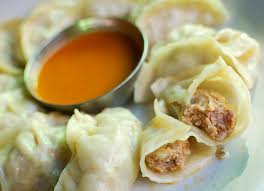|
|
Cuisine Glossary
| You have reached our International Cuisines and information on all aspects of a countries cuisine.
We will try to explain the culture, significant influences, climate, and other factors that have come together to create a distinct style. For example: Spanish, Mexican or Japanese. |
Tibetan Cuisine
 |
Tibetan cuisine is divided into two types: those of the pastoral and farming areas. The pastoral nomads basically consume meat and milk. Mutton and other types of meat, sometimes dried, are eaten in winter, while yogurt and cheese in summer. These foods are rich in protein and calories, but greasy. Green tea usually accompanies Tibetan meals. The farming population is fond of Zamba (roasted Qingke barley flour), Qingke wine, pork and potatoes.
Tibetans have mild palates. Salt, garlic and green Chinese onion are the only seasonings they use. Of course, if guests like spicy food, the versatile Tibetan chefs can satisfy their appetites. There are more than 60 varieties of typical Tibetan dishes, such as rice with milk and meat dumplings in sparerib soup. Tibetan snacks include yak blood cubes, which are made by the following procedures. Draw 0.25 kg of blood from the veins of a yak, then pour it into a pan and boil it on a slow fire until the blood solidifies, cut it into cubes, pour hot butter on them and then add white sugar. Source: HungryMonster Writers |




